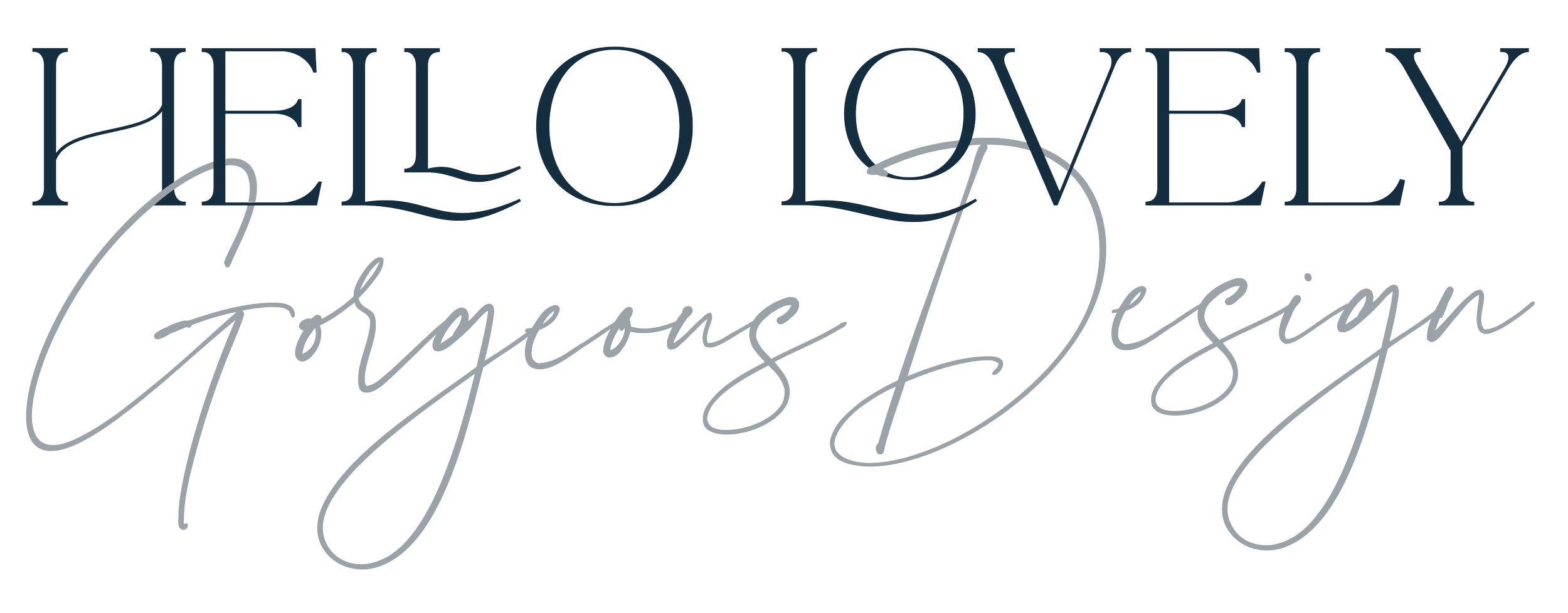Top tips on mood boards, logos and brand identities
Pinterest put me off mood boards for a while. There, I’ve confessed! I probably spent too much time collecting photos of dream kitchens and capsule wardrobes, distracted by perfect imagery to remember that a mood board is a great part of the design process and it doesn't have to be on Pinterest though this does make for easy online collaboration.
How I use mood boards in logo and brand design
Like many graphic designers I think visually. I may see a design in my head and the process once a lightbulb moment has been made but when I think back to very early creations, long before Hello Lovely was a real thing, I can see that it must have been very hard for my clients back then to understand my language. Often a logo would need several revisions as what they had was good but not representative of their final vision. A mood board can take up extra time to create but it ultimately makes the process of logo and brand creation much more fluid. It’s worked wonders across other areas too such as book covers and websites.
It is show and tell journey
If you tell me you’d like a modern logo, it’s almost certain that our minds will alight on different definitions. Sometimes we forget that we have different views of the world. Designing a board is a great way to visually share and compare results.
It’s a brand measuring device
It is easier to reduce the number of revisions by building in sense checks. It is much quicker to remove and delete from a mood board before the logo or brand design starts than mid way.
Colour palettes are made easier
As well as creating the design feel, playing around with colour can happen with a mood board. What will work? How does that translate to the different places where it will be used (the make up of a colour is changed for web, screen and print).
A sense of direction for a brand
A branding package often becomes more than a logo. It could grow to include social media graphics, brochures, flyers, websites and more. Having the concept of the brand in a mood board means a central point of reference for me, you and any third parties like copywriters who maybe employed to provide tone of voice guidance.
This first draft mood board was created for the beauty salon, Elegance to support their branding makeover.
How I use a mood board in my design process
I talk to you
It’s critical that we understand the aims of the branding process be that a logo or a full brand. I need to understand your business, brand and audience. The mood board is the outcome of this conversation and questionnaire.
I gather inspiration on the mood board
I get all the ideas together and place them into Pinterest as this is still an unbeatable and free way to share information. They can be downloaded to your computer or viewed online or via the app. The board is secret too. I tend to stop between 30-50 images and these may include images from typography, nature, interiors, patterns, textures.
Branding board for The Full Stop podcast
The final logo
Editing the trends
In doing this process we may find there is a key set of colours that really sings out, a font that appeals more than another.
Edit again!
At this point we’ve chosen the strongest images together. Now it’s time to remove the images that didn’t work. At this stage I like to have several mood photos, a typographic example, a few patterns and concepts that start to develop a fledging brand persona. By persona I mean who is your brand, what do they look like if they were a human being.
And that’s all there is to it! As I hope you can appreciate, mood boards are more than pretty ideas, they are a great design tool to use in logo and brand development too.
To find out more about brand design and logos, you can look at this page which gives more details. Have you used a mood board, I’d love to know how that went for you?



